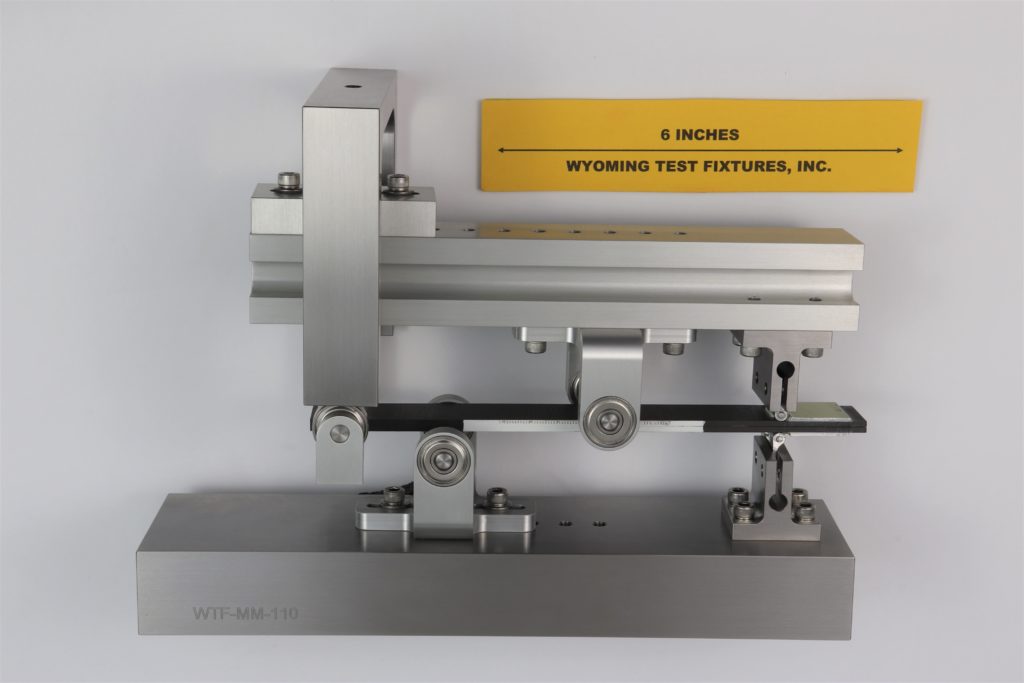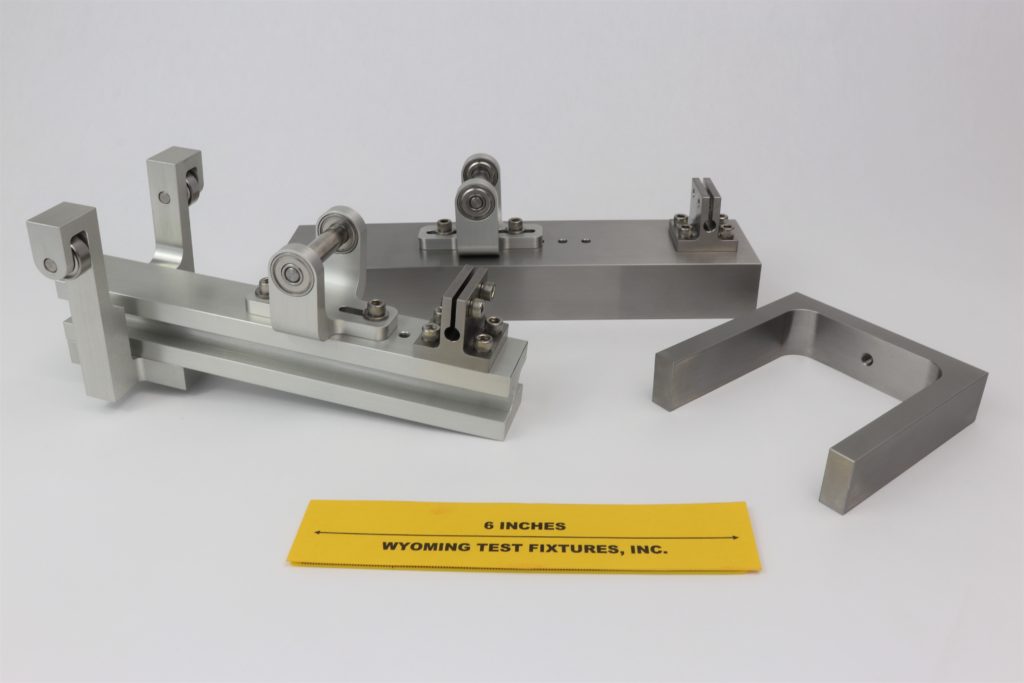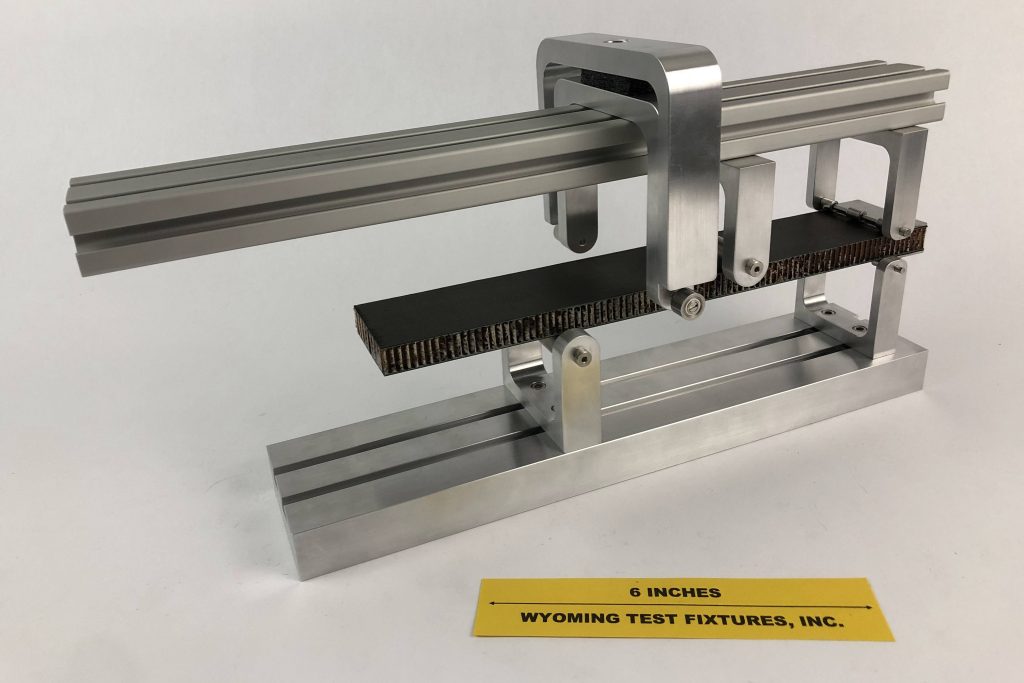Mixed-Mode Bending Fracture Toughness Test Fixture (ASTM D6671)
Model No. WTF-MM (Stainless Steel & 6061-T6 Aluminum)

Fig. 1: Mixed-Mode Bending Inter-laminar Fracture Toughness Test Fixture assembled with a specimen installed.
ASTM D6671 (Reference 1) was developed by NASA-Langley Research Center (References 2 and 3) for determining the interlaminar fracture toughness of continuous fiber-reinforced composite materials. It can also be used to test adhesive joints.
An important feature of this test method and associated fixture is the ability to perform tests at desired ratios of Mode I to Mode II. Most other test methods currently available either permit applying only specific ratios, or the ratio is not well defined.
The test specimen is typically 4.5 in. to 7 in. long, 0.8 in. to 1.0 in. wide, and 0.12 in. to 0.20 in. thick. It contains an 1.5 in. to 3.0 in. long non-adhesive insert at the mid-plane on one end. Hinges are bonded or bolted to the top and bottom of the specimen at this end. One hinge is then clamped to the right end of the base, and the other to the right end of the load lever. A force is applied at the left end of the load lever via the yoke shown at the top left of Fig. 1.
Applied force versus load point displacement is recorded, as well as the length of the corresponding propagating crack.
Another view of the test fixture, with the three main components separated, is shown in Fig. 2. The loading beam (at the upper right in Fig. 2) is fabricated of anodized 6061-T6 aluminum, to minimize the dead weight resting on the specimen when assembled.

Fig. 2: Disassembled Mixed-Mode Bending Inter-laminar Fracture Toughness Test Fixture.

Fig. 3: Sandwich Panel Mixed-Mode Bending Test Fixture
Source of Additional Information:
1) ASTM Standard D6671-13, "Test Method for Mixed Mode I-Mode II Interlaminar Fracture Toughness of Unidirectional Fiber Reinforced Polymer Matrix Composites,” American Society for Testing and Materials, West Conshohocken, Pennsylvania (first published in 2001).
2) J.H. Crews, Jr. and J.R. Reeder, “A Mixed-Mode Bending Apparatus for Delamination Testing,” NASA Technical Memorandum 100662, NASA Langley Research Center, Hampton, Virginia, August 1988.
3) J.Reeder and J.H. Crews, Jr., “Redesign of the Mixed-Mode Bending Delamination Test to Reduce Nonlinear Effects,” Journal of Composites Technology & Research, Vol. 14, No. 1, Spring 1992, pp. 12-19.

